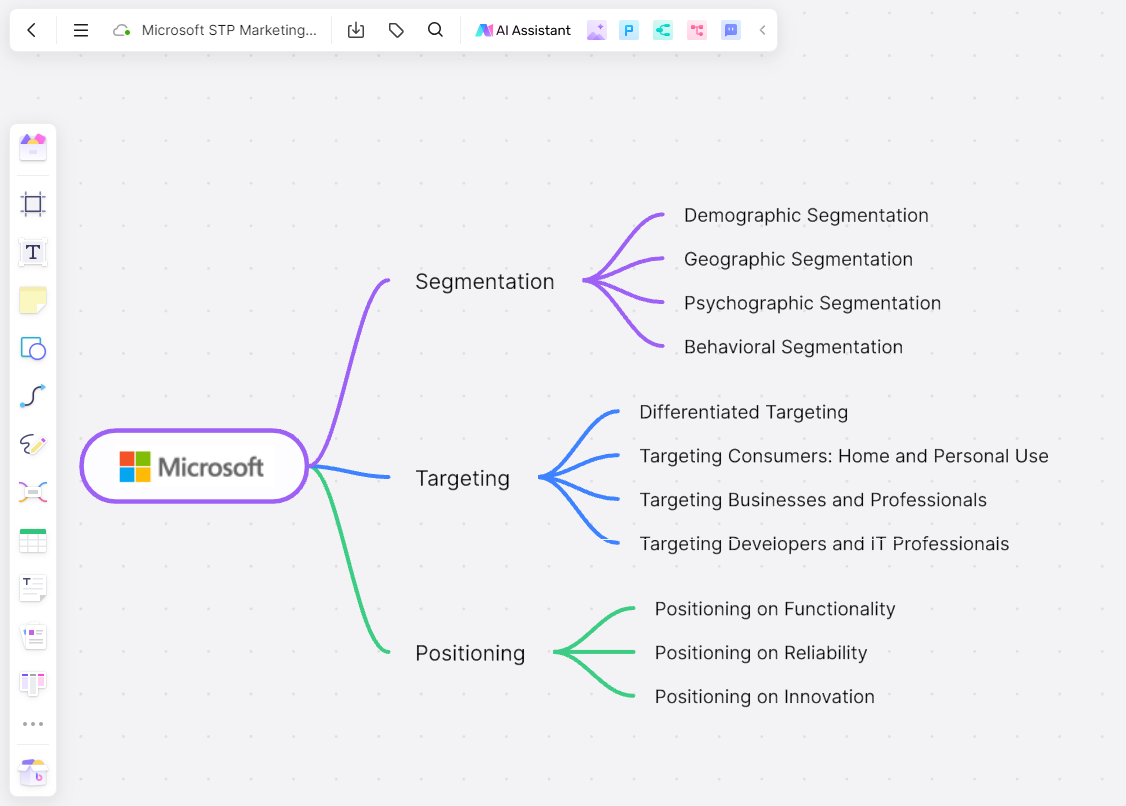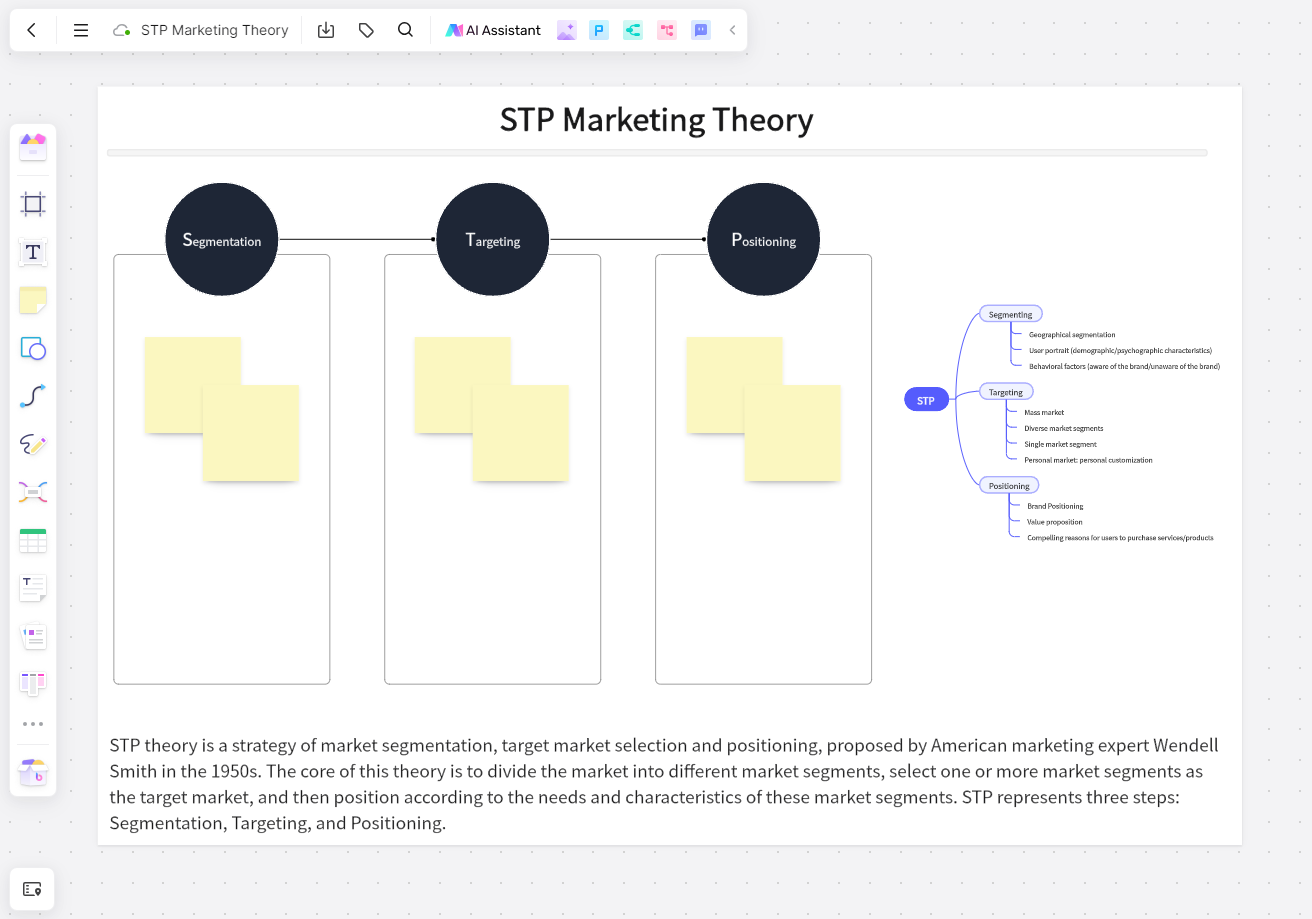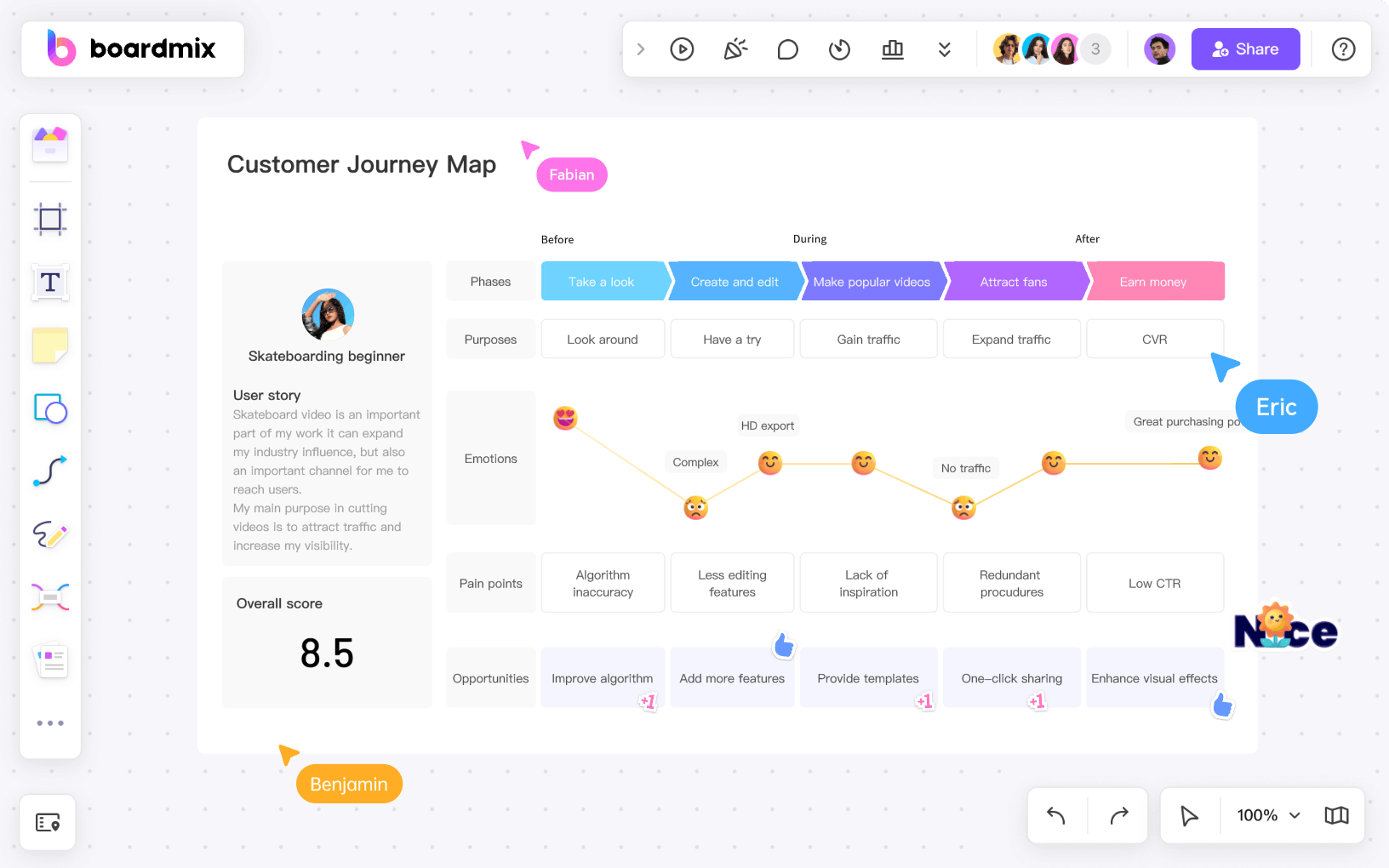Microsoft, a well-known multinational technology company that has impacted the lives of millions across the globe, is often under the microscope. What sets it apart from its fierce competition? How does it manage to attract and retain its diverse customer base? In this extensive analysis, we delve into the critical factors behind Microsoft's sustained success – segmentation, targeting, and positioning.
Microsoft Segmentation, Targeting, and Positioning Mind Map
Every business strategy hinges on clear visualization and understanding. Microsoft’s Segmentation, Targeting, and Positioning approach is no exception. A comprehensible mind map paves the way for a thorough dissection of the strategy. It depicts a condensed summary of key points providing an essential roadmap for in-depth exploration. Let's take a closer look.

Market Segmentation of Microsoft
When exploring the basis of Microsoft's profound global reach, it's essential to understand how it segments its market. The company employs a combination of demographic, geographic, psychographic, and behavioral segmentation. By segmenting its market, Microsoft can identify and understand the varied needs of its customers better, subsequently tailoring its offerings to meet these specific requirements.
Demographic Segmentation
Demographic segmentation is one of the pillars of Microsoft's market segmentation strategy. It involves categorizing the market based on variables such as age, income, occupation, education level, and more. This segmentation enables Microsoft to identify and cater to the needs of various demographic groups.
From students using Microsoft Office Suite for their academic assignments to professionals using advanced software for business operations, Microsoft serves a broad demographic spectrum. They've even crafted products like Xbox gaming consoles to cater to the leisure and entertainment needs of different age groups.
Geographic Segmentation
The magnitude of Microsoft's influence is not limited by geographical boundaries. Its products and services are available in over 190 countries, catering to users across multiple continents. By understanding regional disparities and preferences, Microsoft ensures that it meets the specific technological requirements of users, regardless of their location.
Microsoft continues to tailor its products to adapt to geographical and cultural variations. For example, Windows 10 supports over 110 languages and is customized for different regions to handle date-time format, currency, keyboard layout, and more.
Psychographic Segmentation
Understanding consumers' psychological aspects— their attitudes, values, and lifestyles— has been pivotal for Microsoft's market dominance. Through psychographic segmentation, they have managed to align their versatile product range with varied customer mindsets.
Whether customers prioritize simplicity in user interfaces (like those preferring Windows operating system), innovation (those invested in mixed reality platforms like HoloLens), productivity (Office 365 users), or reliability (Azure cloud services users), Microsoft has ensured its presence in their digital journey.
Behavioral Segmentation
Behavioral segmentation involves analyzing the behavior of customers towards products— their knowledge, their attitude, their use and responses. This is another area where Microsoft excels.
Whether it’s understanding the repeated purchase pattern of Xbox game titles or recognizing the shift towards cloud-based software preference among businesses or noting the increased demand for cybersecurity— Microsoft closely observes the users' behavior. By responding to these identified behaviors with the right products and services (like offering a subscription-based model for Office 365), they ensure customer satisfaction and loyalty.
Targeting of Microsoft
In the world of marketing, the success of a product or service doesn't merely rely on its quality or brand name. The critical element lies in effectively reaching the right set of customers. Microsoft's targeted marketing plays an instrumental role in its impressive growth story. By employing a differentiated targeting strategy, it has successfully reached out to a diversified user base and catered to their unique needs.
Differentiated Targeting
The essence of differentiated targeting lies in tailoring distinct offerings for different market segments. Understanding that a "one size fits all" approach does not guarantee success, Microsoft diligently assesses the needs and wants of each market segment to develop or customize its products and services.
From operating systems to productivity tools, gaming consoles to cloud services, each offering is expertly targeted at the identified segments, ensuring Microsoft's expansive reach.
Targeting Consumers: Home and Personal Use
A significant portion of Microsoft's targeting strategy is centered on individual consumers' needs at home or personal use. Microsoft has an impressive lineup of consumer-oriented products like Windows Operating System, Office 365 Home, Skype, Outlook.com, and Xbox. These products are designed with user-friendly interfaces and comprehensive help and support features that appeal to home users.
For instance, students are offered academic licenses for its software suite at discounted rates. This not only serves the customers’ immediate needs but also builds familiarity and loyalty with the brand from an early age.
Targeting Businesses and Professionals
Professionals and businesses represent a substantial segment of Microsoft's target audience. They require more sophisticated, secure, and robust tools for their operations. Keeping this in mind, Microsoft offers tailored products like Office 365 for Business, Azure Cloud Services, Dynamics 365, LinkedIn Premium, and Power BI.
To cater to small businesses or startups that might require lower-cost solutions with high utility, Microsoft provides affordable options like Office 365 Business Essentials. For larger corporations that require comprehensive solutions, they offer premium services like Office 365 E5.
Targeting Developers and IT Professionals
The technology landscape would be incomplete without the community of developers and IT professionals. To target this crucial segment, Microsoft has created a unique suite of products and platforms such as Visual Studio, .NET Framework, Azure Developer Tools, SQL Server, and more. By providing a comprehensive set of tools for development, testing, and deployment of applications, Microsoft has established itself as a go-to brand for developers around the world.
Positioning of Microsoft
Positioning refers to the specific market niche a brand occupies in the minds of customers and how it differentiates from its competitors. Microsoft's positioning has been primarily around functionality, reliability, and innovation. Despite a fiercely competitive landscape, the tech giant has consistently managed to position itself as a dependable and progressive technology partner for customers across various segments.
Positioning on Functionality
Microsoft has a comprehensive suite of products and services designed to enhance the functionality of personal and professional life. Their most notable product, Windows, has positioned itself as the operating system that brings together functionality and simplicity. It's positioned as a platform that caters to both individual consumers seeking ease of use and businesses requiring extensive capabilities.
Microsoft Office Suite, another marquee product, positions itself as the quintessential tool for productivity. It doesn't matter whether you're a student working on an assignment, a small business owner managing finances, or a multinational corporation executing intricate operations— Microsoft Office has become synonymous with getting things done efficiently.
Positioning on Reliability
In today's interconnected world, security, and reliability are paramount. Understanding this, Microsoft has positioned itself as a reliable provider of secure products and services. Be it the robust Windows Defender built into their operating system or the advanced security features in Azure Cloud Services; Microsoft emphasizes strong security measures across its products, thus strengthening its positioning on reliability.
Moreover, the consistent updates and improvements delivered to its products further solidify Microsoft's reputation for dependability. Customers know they can count on Microsoft for regular software updates that address any potential issues and provide enhanced features.
Positioning on Innovation
One cannot talk about Microsoft without acknowledging its pioneering spirit. The company has always positioned itself at the forefront of technology, driving innovation in areas like mixed reality (HoloLens), AI (Cortana), and quantum computing.
Furthermore, Microsoft Azure, their cloud service platform, is marketed as an innovation enabler for businesses. It supports a vast array of services and functionalities such as AI, analytics, machine learning, Internet of Things (IoT), thereby allowing businesses to innovate and transform their operations.
Microsoft Segmentation, Targeting, and Positioning Cheat Sheet
Having examined Microsoft's segmentation, targeting, and positioning strategies in depth, it is helpful to consolidate this information in a cheat sheet. A visual summary or cheat sheet provides an at-a-glance understanding of the company's strategic approach.
This cheat sheet unravels Microsoft's STP tactics, providing valuable insights into its overarching marketing strategy. This consolidation can guide you to better comprehend and utilize such strategies in your venture.

Key Takeaways: STP Template & Tool
Microsoft’s ingenious segmentation, targeting, and positioning strategies have undoubtedly been instrumental in its global dominance. The adept combination of these elements allows it to maintain its market supremacy.
Through effective market segmentation, precise targeting, and strategic positioning, Microsoft has created a solid brand presence that appeals to a diverse customer base.
Understanding your brand's unique position in the market can give your business a competitive edge. Boardmix is an excellent tool To fully utilize these insights in your enterprise for conducting a brand positioning analysis, providing various benefits. For quick reference and practical application, make use of our pre-built Market Segmentation Template and STP Analysis Template. These resources can significantly streamline your strategic planning, guiding your business toward its objectives effectively.

Microsoft's impressive STP strategy offers invaluable lessons for every business aiming for success in today's highly competitive market. The journey to success begins with understanding and applying these principles, translating them into sustained growth and brand loyalty.








